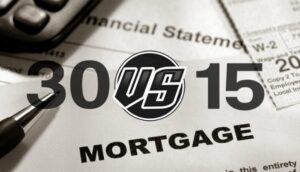
In the vast and dynamic landscape of American real estate, investors often seek opportunities to maximize their returns through strategic investments. One avenue that has gained popularity in recent years is the use of rehab loans, also known as renovation or fix-and-flip loans. These financial instruments offer investors the flexibility and capital needed to purchase distressed properties, renovate them, and sell them for a profit. Let’s delve into the mechanics of how these rehab loans work and why they are becoming increasingly essential in the realm of real estate investing.
The Concept of Rehab Loans
Rehab loans are tailored financial products designed specifically for investors looking to purchase properties in need of renovation or repair. Unlike traditional mortgage loans, which are based on the property’s current value, rehab loans consider both the purchase price and the estimated cost of renovations. This unique structure allows investors to secure financing based on the property’s potential after it has been rehabilitated, rather than its current condition.
How Rehab Loans Work
- Property Identification: The first step in securing a rehab loan is identifying a suitable investment property. Investors typically target distressed properties that require renovation but have the potential to yield substantial returns once restored.
- Loan Application: Once a property is identified, investors apply for a rehab loan through a lender specializing in real estate investment financing. The lender assesses the property’s current condition, the proposed renovation plan, and the investor’s financial qualifications.
- Loan Approval and Funding: If the lender approves the loan application, they provide financing based on the property’s after-repair value (ARV), which includes both the purchase price and the estimated renovation costs. The funds are typically disbursed in stages, with initial funds for the purchase followed by additional disbursements as renovations progress.
- Renovation Process: With financing secured, investors proceed with renovating the property according to their proposed plan. This may involve structural repairs, cosmetic upgrades, or a complete overhaul, depending on the property’s condition and the investor’s objectives.
- Property Sale or Refinancing: Once the renovations are complete, investors have the option to sell the property for a profit or refinance it to hold as a rental or long-term investment. The goal is to maximize the property’s value and generate a positive return on investment.
Benefits of Rehab Loans for Investors
- Access to Capital: Rehab loans provide investors with access to capital they may not otherwise have, enabling them to pursue lucrative investment opportunities.
- Flexibility: Unlike traditional financing options, which may have strict eligibility criteria and lengthy approval processes, rehab loans offer greater flexibility and faster approval times, allowing investors to act swiftly in competitive markets.
- Maximized Returns: By leveraging rehab loans to purchase and renovate distressed properties, investors can significantly increase the property’s value and generate higher returns upon resale or refinancing.
- Diversification: Rehab loans allow investors to diversify their real estate portfolios by targeting properties with varying degrees of renovation needs and potential market demand.
Risks and Considerations
While rehab loans offer numerous benefits, investors should also be aware of the associated risks, including:
- Market Volatility: Real estate markets can be unpredictable, and factors such as economic downturns or changes in local market conditions can impact property values and resale potential.
- Renovation Costs: Accurately estimating renovation costs is crucial, as unexpected expenses can erode profitability.
- Project Management: Successfully overseeing a renovation project requires time, expertise, and effective project management skills.
- Exit Strategy: Investors must have a clear exit strategy in place, whether it’s selling the property, refinancing, or holding it as a rental.
Rehab loans play a vital role in the dynamic world of real estate investing, offering investors the capital and flexibility needed to transform distressed properties into profitable assets. By understanding how these loans work and carefully assessing the associated risks and considerations, investors can leverage this financing option to unlock new opportunities and maximize their returns in the ever-evolving landscape of American real estate.
 Memphis Buy And Hold is specializing in locating, purchasing, renovating and managing single-family and multi-unit properties and possesses from 2007 up to the present of experience in real estate investing and property management in the Memphis and Nashville markets.
Memphis Buy And Hold is specializing in locating, purchasing, renovating and managing single-family and multi-unit properties and possesses from 2007 up to the present of experience in real estate investing and property management in the Memphis and Nashville markets.


